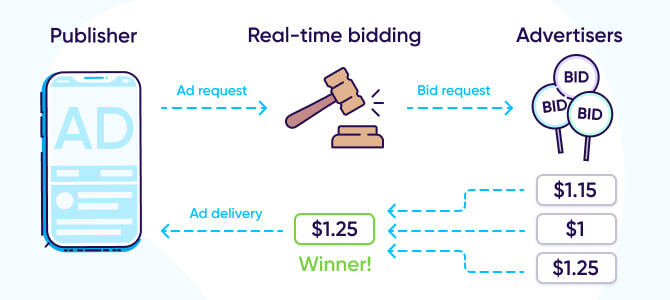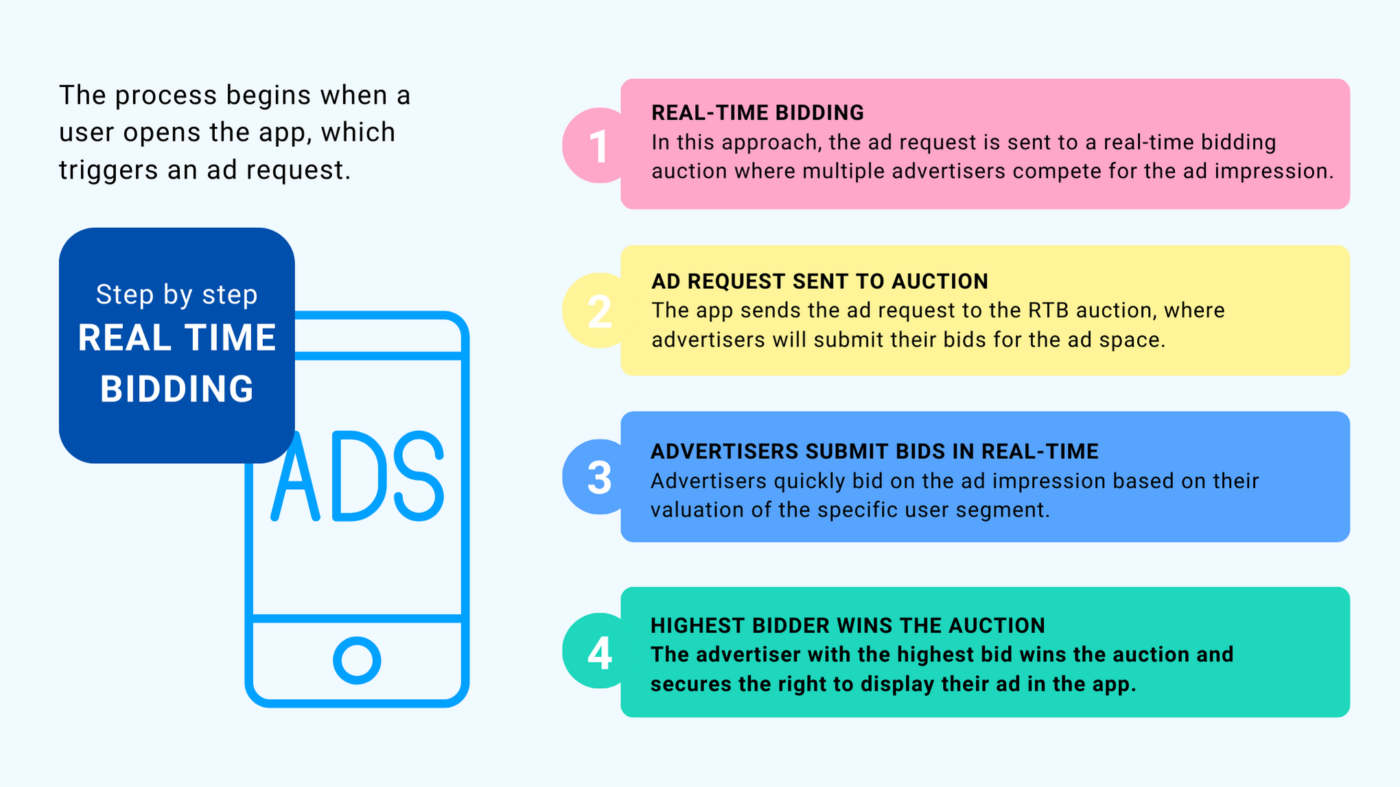In the world of programmatic advertising, Supply-Side Platforms (SSPs) have emerged as crucial intermediaries between publishers and advertisers. By enabling publishers to sell their ad inventory in real time through automated auctions, SSPs have transformed the digital advertising ecosystem. Whether youre a publisher looking to maximize your ad revenue or an advertiser seeking access to premium inventory, understanding SSPs and their role is essential for thriving in todays competitive ad landscape.
In this article, we’ll explore what Supply-Side Platforms (SSPs) are, how they work, and the key benefits they offer to publishers and the broader digital advertising ecosystem.

What is a Supply-Side Platform (SSP)?
A Supply-Side Platform (SSP) is a technology platform that helps publishers manage, sell, and optimize their digital advertising inventory. SSPs enable publishers to offer their available ad space (or inventory) to a range of potential buyersprimarily through real-time bidding (RTB) and programmatic auctions. These platforms connect publishers with various Demand-Side Platforms (DSPs), which represent advertisers looking to purchase ad inventory.
SSPs provide publishers with the tools to maximize revenue from their ad space by exposing it to a wide array of potential buyers, ensuring that each impression is sold at the highest possible price.
Key Functions of an SSP:
- Ad Inventory Management: Allows publishers to manage and organize their ad space efficiently.
- Real-Time Bidding (RTB): Facilitates auctions where advertisers bid for impressions in real-time.
- Yield Optimization: Helps publishers optimize pricing and maximize revenue by dynamically adjusting bids.
- Audience Segmentation: Leverages data to segment users and target specific advertisers based on behavior, demographics, and other factors.
How Does an SSP Work?
The process through which an SSP works is highly automated and involves several key steps:
- Inventory Aggregation: A publishers ad space is made available to various demand sources (advertisers) via the SSP.
- Real-Time Auction: When a user visits a website, the SSP sends an ad request to connected Demand-Side Platforms (DSPs) with information about the user, such as demographics, browsing history, and location.
- Bidding: Advertisers bid in real time for the opportunity to show their ads to the user.
- Winning Bid: The highest bidder wins the auction and their ad is displayed on the publisher’s site.
- Revenue Collection: The publisher earns revenue from the winning bid, with the SSP handling the payment and ad delivery.
This entire process happens in a matter of milliseconds, ensuring that publishers can sell their ad inventory efficiently while maximizing the value of each impression.

Benefits of Supply-Side Platforms (SSPs)
1. Maximized Revenue for Publishers
One of the most significant advantages of using an SSP is that it helps publishers maximize revenue. By offering inventory to multiple demand sources, including DSPs, ad exchanges, and private marketplaces, SSPs increase the competition for each ad impression. This competition drives up the price, ensuring that publishers get the highest possible bid for their ad space.
Dynamic pricing features within SSPs also allow publishers to adjust bids in real time, optimizing yield for every impression.
2. Access to a Broad Range of Buyers
SSPs enable publishers to connect with a wide network of buyers, both direct and programmatic. This access to multiple demand sources increases the chances of selling ad inventory at a premium price.
Publishers can gain access to advertisers from all over the world, reaching a global audience and increasing the potential for monetization.
3. Real-Time Auctions and Data-Driven Decision Making
With real-time bidding (RTB), SSPs allow publishers to auction off their ad space in real time, ensuring that they receive the most competitive offers. Additionally, the data provided by SSPs enables publishers to make data-driven decisions about which advertisers should be targeted for specific inventory, optimizing both revenue and user experience.
4. Automated Ad Operations
SSPs help automate various aspects of ad operations, including pricing, inventory management, and optimization. This reduces the need for manual intervention, saving time and resources for publishers. With the right SSP integration, publishers can automate much of the ad sales process, making it easier to manage large volumes of ad inventory.
5. Improved Ad Quality and Relevance
SSPs also help publishers maintain the quality of ads displayed on their sites. Through integrations with Ad Verification and brand safety tools, SSPs ensure that only relevant and high-quality ads are shown to users. This is critical for preserving user experience and maintaining trust with both users and advertisers.
For example, publishers can use ad verification tools to block ads from dubious sources or inappropriate content, ensuring that the ads align with their site’s values.
Types of Supply-Side Platforms (SSPs)
Not all SSPs are created equal. There are different types of SSPs that cater to different needs and preferences. The most common types include:
- Open Marketplaces (Open Auction):
- These platforms facilitate public auctions where multiple buyers bid for available ad space. Publishers have less control over the buyers but benefit from greater competition.
- These platforms facilitate public auctions where multiple buyers bid for available ad space. Publishers have less control over the buyers but benefit from greater competition.
Private Marketplaces (PMPs):
- Private marketplaces allow publishers to offer their inventory to a select group of buyers, usually at a fixed price or with preset conditions. This offers more control over who purchases the inventory.
- Example: Google Ad Manager
Header Bidding Platforms:
- Header bidding is a type of programmatic advertising where publishers allow multiple demand partners to bid simultaneously for their inventory before making calls to ad servers.
- Example: Prebid.js (a popular header bidding solution)
Challenges of Using SSPs
While SSPs provide significant benefits, there are a few challenges that publishers should be aware of when using them:
1. Ad Fraud Risks
- As with any programmatic ad buying, ad fraud remains a significant issue. Fraudulent activity, such as bot traffic and fake impressions, can inflate costs and diminish revenue.
- Solution: Implement fraud detection technologies and partner with SSPs that have built-in fraud prevention mechanisms.
2. Complexity and Integration Issues
- SSPs can be complex to integrate into existing ad tech stacks, particularly for smaller publishers with limited resources.
- Solution: Work with SSPs that offer robust customer support, training, and easy-to-use dashboards for easier integration and management.
3. Data Privacy Concerns
- SSPs handle vast amounts of user data, and publishers must ensure they comply with data privacy regulations such as GDPR and CCPA.
- Solution: Ensure that your SSP platform is compliant with the latest privacy regulations and data protection standards.
4. Revenue Sharing
- SSPs typically charge a fee or take a percentage of the revenue generated from ad sales, which can reduce the publishers overall earnings.
- Solution: Select SSPs with fair revenue-sharing models that align with your business goals.
